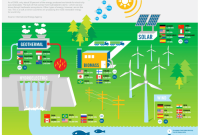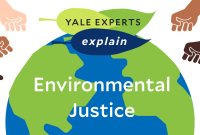In this age of accelerating development, safeguarding our planet’s precious resources – the air we breathe, the water we drink, the fertile soil that sustains us – is no longer a luxury, but a necessity. This comprehensive guide delves into the world of Natural Resources Conservation, exploring its significance, methods, benefits, and the crucial role it plays in ensuring a sustainable future.
The Tapestry of Natural Resources
Natural resources encompass the materials and substances that occur naturally on Earth and are vital for human survival and progress. These resources include:
- Air: The foundation of life, providing us with oxygen for respiration.
- Water: Essential for drinking, sanitation, agriculture, and maintaining healthy ecosystems.
- Soil: The lifeblood of agriculture, providing nutrients for plant growth.
- Minerals: Nonrenewable resources used in construction, manufacturing, and technology.
- Forests: Lungs of the planet, absorbing carbon dioxide, releasing oxygen, and providing habitat for diverse species.
- Wildlife: A vital part of the ecological balance, contributing to pollination, seed dispersal, and maintaining healthy ecosystems.
The Importance of Conservation
Natural resources conservation focuses on the wise management, protection, and sustainable use of these resources. It’s crucial for several reasons:
- Securing the future: Responsible use ensures these resources are available for present and future generations.
- Protecting the environment: Conservation safeguards biodiversity, prevents habitat loss, and combats climate change.
- Fostering sustainable development: Sustainable practices promote economic growth without compromising environmental health.
Facing the Challenges: Resources Under Threat
Many natural resources are facing depletion or degradation due to human activities. Here are some examples:
- Water: Pollution, climate change, and population growth threaten freshwater availability.
- Forests: Deforestation for agriculture, development, and unsustainable logging practices are alarming.
- Minerals: Finite resources like fossil fuels require responsible extraction and exploration of alternatives.
- Wildlife: Habitat loss, pollution, and climate change endanger countless species.
A Multifaceted Approach: Methods for Conservation
To combat these challenges, we need a multifaceted approach. Here are some key methods:
- Reduce, Reuse, Recycle: Minimizing waste and maximizing resource utilization through responsible consumption.
- Sustainable Practices: Implementing strategies like afforestation (planting trees), water conservation techniques, and renewable energy adoption.
- Sustainable Agriculture: Utilizing practices like crop rotation, cover cropping, and organic farming to conserve soil and water.
- Policy and Regulation: Establishing regulations that promote responsible resource use and discourage harmful practices.
Inspiring Examples: Success Stories in Conservation
Real-world examples showcase the power of conservation efforts:
- The Great Green Wall: An ambitious pan-African project planting trees across the continent to combat desertification and improve livelihoods.
- California Water Conservation: Comprehensive state efforts significantly reduced water usage during droughts.
- Costa Rican Forest Conservation: Costa Rica’s commitment to protecting rainforests resulted in their recovery and a thriving ecotourism industry.
A Multitude of Benefits: Why Conservation Matters
Conservation offers a multitude of benefits:
- Environmental: Protects ecosystems, promotes biodiversity, and mitigates climate change.
- Economic: Creates jobs in renewable energy, eco-tourism, and sustainable resource management.
- Social: Provides access to clean water, fresh air, and recreational areas, enhancing quality of life.
Challenges and Solutions: Obstacles to Overcome
Several challenges hinder conservation efforts:
- Population Growth: Increasing demand for resources puts pressure on ecosystems.
- Technological Advancements: Unsustainable resource extraction techniques can exacerbate resource depletion.
- Economic Factors: Short-term profit prioritization over sustainability can lead to environmental damage.
- Climate Change: Rising temperatures, changing precipitation patterns, and extreme weather events threaten resources.
- Public Awareness: Lack of understanding about conservation principles can hinder progress.
Technology as an Ally: Tools for a Sustainable Future
Technology offers innovative solutions for tackling these challenges:
- Remote Sensing and Monitoring: Satellites and drones provide real-time data on resource availability.
- Precision Agriculture: Sensors and data analysis optimize resource use in farming for increased sustainability.
- Renewable Energy and Energy Efficiency: Technological advancements promote cleaner energy sources and reduce energy consumption.
- Artificial Intelligence: AI analyzes data to predict resource trends and optimize conservation strategies.
- Citizen Science: Mobile apps empower citizens to collect data and contribute to conservation efforts.
Learning from Success: Case Studies in Action
Examining successful case studies provides valuable insights:
- Chesapeake Bay Restoration: A collaborative effort involving various stakeholders successfully restored this bay from severe pollution and habitat loss.
- Great Barrier Reef Restoration: Innovative techniques like coral gardening are being utilized to restore this vital ecosystem.
Key Factors for Successful Conservation Projects
The case studies we explored highlight the importance of several key factors for successful conservation projects:
- Stakeholder Engagement: Effective conservation involves a diverse group of stakeholders, including local communities, government agencies, businesses, and conservation organizations. Collaboration ensures their needs are considered, fosters community support, and leverages diverse expertise.
- Science-Based Decision Making: Sound scientific research and ongoing monitoring are crucial. This ensures that conservation actions are targeted towards the specific needs of the ecosystem and have a measurable impact.
- Long-Term Funding and Support: Conservation is an ongoing endeavor requiring sustained financial resources. Securing long-term funding guarantees that projects can continue and achieve lasting results.
- Adaptive Management: Conservation is not static. Projects need to be flexible and adaptable, able to adjust to new information, changing environmental conditions, and unforeseen challenges. This allows conservationists to respond effectively and improve their efforts over time.
Lessons Learned: A Roadmap for the Future
By analyzing successful projects, we can identify valuable lessons for future conservation efforts:
- Collaboration is key: Diverse stakeholders working together can achieve more significant results.
- Science matters: Evidence-based decisions are crucial for effective conservation strategies.
- Sustainability is essential: Long-term funding secures the continued success of projects.
- Adaptability is vital: Responding to changing circumstances ensures long-term effectiveness.
The Future of Natural Resources Conservation
Looking ahead, the future of natural resources conservation is intertwined with technological advancements and innovative approaches:
- Emerging Technologies: Artificial intelligence, remote sensing, and big data analytics will continue to transform conservation efforts. AI can analyze vast datasets to identify patterns, predict ecological changes, and optimize resource management. Remote sensing allows for more accurate monitoring of resource availability and environmental changes.
- Innovative Partnerships: Collaborative partnerships between governments, businesses, and non-profit organizations will be increasingly important. These partnerships leverage diverse expertise, resources, and perspectives to address complex conservation challenges.
A Shared Responsibility: Ensuring a Sustainable Future for All
The conservation of natural resources is a responsibility shared by all. It’s not just about protecting the environment for its own sake; it’s about guaranteeing a healthy and sustainable future for generations to come. Clean air, water, food, and a stable climate are essential for human well-being and societal progress. By working together, embracing innovation, and promoting responsible resource management, we can create a legacy of environmental stewardship that sustains our planet for the benefit of all living things.
Natural Resources Conservation is not a burden, but an investment in our future. It’s about ensuring the health of our planet, the well-being of our communities, and the long-term prosperity of our societies. By recognizing the importance of conservation, embracing innovative solutions, and fostering a collective commitment to sustainable practices, we can secure a future where humanity thrives in harmony with a healthy and vibrant natural world.




